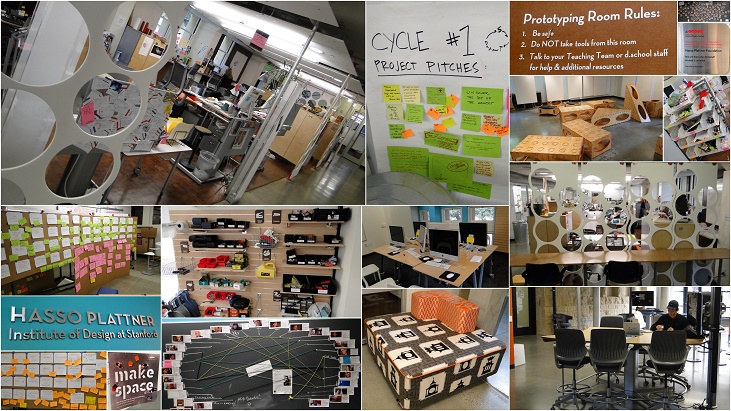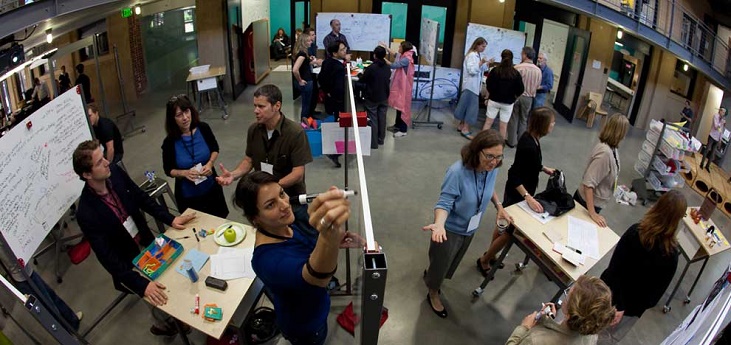Throughout our lives, we get ideas that have worth but due to the lack of a promoting, nurturing culture it vanishes in the subconscious and we continue with the hustle and bustle of life.
As a lecturer, I promote an out of the box thinking environment to encourage students to come out of the typical learning surrounding and mold their mind towards cultivating ideas and theories, to be creative and diversified. It’s really an enriching experience for me and my students to evolve our mindsets and help us learn things in a more didactic manner.
I get some good level of thinking out of them, stuff that is sometimes borderline genius, but the ideas are pitched in a jumbled way and they are told to write them down on a piece of paper. This can be hard as they are not habitual of being in such a culture. In most cases, the ideas remain shuffled up in the head and ends up getting lost.
For an idea to become a reality it takes time but choosing not to share it with the world can cut anyone off right at the initial phase. Why? Because the idea didn’t get the opportunity to evolve, to get its problems fixed and its level improvised.
See Also: Gamifying Education Without Using Technology
For a country to prosper it needs to promote innovation in a healthy way instead of popping out the bubbles, and for that to happen effort needs to be put in. This is already being done in dozens of the renowned institutions throughout the world and a name that’s worth mentioning in this regard is that of Stanford, one of the finest schools in the world.
Hasso Plattner Institute of Design aka Stanford University’s d.School is the epicenter for innovation consisting of people from diversified fields, different backgrounds looking into the variety of brain teasing problems through the world, coming together, sharing ideas and working up on them to get a step closer to getting the job done through collaborative efforts.
The research center was established back in 2004 by Stanford mechanical engineering Professor David Kelley with the help from several industrial giants. It is a joint venture between Stanford and Hasso Plattner Institute of University of Potsdam in Germany.
Now, this is a place where ideas come to life, students and faculty ranging from all fields; engineering, medicine, business, social sciences, law work together on improving the ideas and coming up with solutions to a versatile range of problems whether it be social or industrial.
So how does it all work? What makes d. school so peculiarly inspiring and effective? Well, for starters. the hub doesn’t have typical classrooms. There are dozens of versatile sitting areas for interactive group meetings that consist of both casual or formal meetings.
Ideas can be brought up and expressed instantly on movable walls which are made up of white sheets and function as white boards whenever needed. Anyone can write down on sticky notes and post it on the walls, design sketches, and even pipe cleaners for making projects, anyway in which one feel right to present and share their idea.
The place is filled with signs of motivational posters and workspaces which break the barriers between the students and faculty, as David Kelley founder of the school says so;
“We wanted to make this space ‘not precious’, an egalitarian arrangement where student innovators would feel comfortable engaging with instructors. We wanted to lower the status difference between the professors and students, and you can do that with this space.”
The research center with its innovative design and auspicious environment eliminates the fear of expressing. d. school is not part of the Stanford’s degree awarding schools. But its unique standing as a nexus for research and development, students from all the schools can opt-in d. school program along with their respective degree. Similarly, the faculty doesn’t get paid by the d. school, they are either backed up by their particular departments or are willing to take the extra load. So, pretty much anyone who is at d. school wants to be there.
See Also: Is frugal innovation possible in Pakistani startup ecosystem?
The school hosts 750 students per year without handing out any certificates or degrees. No assignments are given and there are no criteria for grading either, instead the program looks into the success of how the students are reshaping the world’s problems into solutions. Even failing is a plus point here. It is strictly believed to learn from countless failures to develop something worthy and get an experience which helps in unlearning rigidness and molding oneself to be more flexible, creative and open to more intakes.
Pitching ideas and working alongside companies, renowned industrialists, philanthropists and visionaries help in finding a niche in the market and connects people in new ways. The results are already out there, from students creating solar lanterns and water filters for the less privileged to developing low-cost mobile applications throughout the world such as Pulse New reader that topped iPhone’s app chart.
M-Maji is a mobile water project which helps people to look for clean sources of water through their mobiles. The project is implemented in collaboration with the Nokia Africa Research Centre and the University of Nairobi.
Another team worked on mobile based project for pharmaceutical counterfeiting. This team is connecting malaria patients with up to date information on malaria treatment, pricing etc.
Similarly, non-profit entrepreneurs Jim Taylor and Debbie Aung Din (husband and wife), run Proximity Designs, for which they work with rural Burmese farmers in collaboration with their students.
The popularity in the success rate can be measured by looking into the point that there is more than twice the amount of applicants for a variety of programs offered at the school than the facility can accommodate.
It is a place not just for us to admire but to be galvanized by. It is evident that we can pace up to heights with the establishment of such facilities in our educational institutions to create an environment that encourages students and faculty alike to not only express their views and opinions but also implement them.
Thanks to the development of the entrepreneurial culture via the establishment of innovation centers and entrepreneurial competitions in recent years, we have seen a culture which promises to nourish and encourage productive efforts, and utilize native talent. Companies should take benefit from solving problems on a large scale from a diverse number of experts in an effective manner. This will cut developmental costs to some extent rather than seeking refuge in foreign consultancy.







 Adobe Flash’s recent update can let hackers access your PCs
Adobe Flash’s recent update can let hackers access your PCs